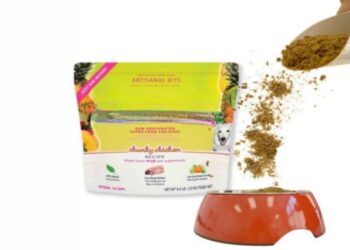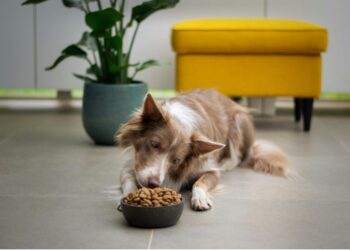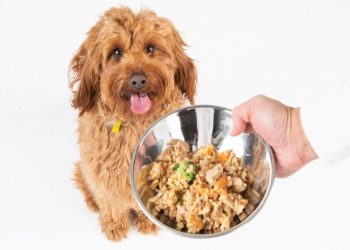Taking care of your dog is not a simple process. They need a lot more than just regular exercise and being given food a couple of times per day. There are more things to consider. For instance, every breed of dog is different and has different needs. Add to that, every dog is an individual and will respond differently even compared to the rest of the breed.
There is no one size fits all scenario for what the best food is for dogs, either. It takes a lot of trial and error to settle on the right diet for your dog if you don’t already know. You need to tailor the dog’s diet for its breed and other factors. Of course, it starts with using high-quality dog food, but it goes a bit deeper than that.
In this article, we will go over exactly how to make sure that you are giving your dog the exact diet it needs.
Make sure it’s balanced
A dog has the same need for certain nutrients, minerals, and amino acids in its food for the body to function properly. A diet needs to be healthy and balanced for this to be achieved. The problem with this is twofold: different breeds have different needs and it’s not easy to know what a balanced diet is.
How do you know if the dog food is balanced? There are certain things to look for. There are going to be different ingredients that you’ll need depending on the breed, lifestyle, and age of the dog but the basics are these:
- Amino acids from things like fish oil
- Proteins from meat
- Some whole grains
- Some fat
- Certain vegetables
It is very important for animals like dogs to get plenty of calcium for their bones and then magnesium, phosphorus, and other micronutrients.
Be sure to check the label carefully to see what percentages these ingredients represent in the mix. It should also be labeled bioavailable. This means that the nutrients are able to be absorbed and used by the body. The feed may seem balanced, but if the body can’t use the nutrients and minerals the result can be malnourishment.
Think about lifestyle
Different dogs and owners have much different activity levels. Some dogs love to lounge around all day and take it easy. Others need to be running around and have trouble staying idle.
The diet they need is going to be vastly different from each other. Those two different dog types shouldn’t be eating the same formula. The active dog in this scenario requires a blend with the right amount of calories according to its size and breed. The low-energy pup needs a low-calorie formula to avoid the risk of obesity and the related illnesses that come with it.
Look for blends with whole grains with a good ratio of meat and fat in the mix. The feed should be labeled according to the size of the dog and how many calories per serving. The average dog needs about 25 calories per pound that the dog weighs. If your dog is more active than the average dog then increase that amount. Do the reverse for older dogs or dogs that are not very active.

Treat illnesses
Dogs are very much like humans and can end up with a variety of ailments. Choosing the right dog food is all the more important when your dog has problems with things like diabetes, gastroenteritis, or heart problems.
In fact, many dog foods are formulated with blends of ingredients specifically for the type of illness the dog has. Don’t go for any food without first consulting your vet and then looking for the blend that will help. You may not find a specific formula for the illness in which case it is important to look for ingredients to avoid when your dog has problems.
Start out by buying small bags of food before committing. If your dog doesn’t like that particular brand then you will have to go through trial and error to find the right one.
Try raw food
A raw food diet is as close to how a dog would eat in nature as possible. It has the added benefit of it being carefully balanced in a way that foraging and hunting in the wild would never accomplish. There are risks of course and it takes a bit of research to settle on the right process.
It involves feeding the dog a blend of raw, select vegetables, eggs, meat, and even ground bones. Doing this yourself is a bit of work as it has to be done in a safe and also effective way. For instance, feeding a dog raw ground muscle meat carries the risk of bacteria such as salmonella and E. coli.
Take extra care to source the ingredients well to ensure they are safe for consumption when raw. And always feed it to your dog quickly while it is as fresh as possible. Luckily, there are brands out there that premix and package everything you need so you don’t have to do it yourself. They come frozen, freeze-dried, or dehydrated so there is little risk of contamination.
The results from this diet are a smooth and silky coat and strong bones. There is also less risk of periodontal disease from a raw diet such as gingivitis and infected gums. Teeth are also much stronger.
Mix wet and dry
An all dry food diet is not good for most dogs. It doesn’t flush out the kidneys and leads to renal problems. Dry foods are very good for dogs as they can be well balanced and have all the proper nutrients needed. To get the most out of dry foods, make sure to mix them occasionally with wet foods, or something like no sodium meat broth.
You can either alternate feedings with one wet and one dry to make sure they don’t get too much dry food. Or, you can literally mix them together.
Reading Suggestions:









